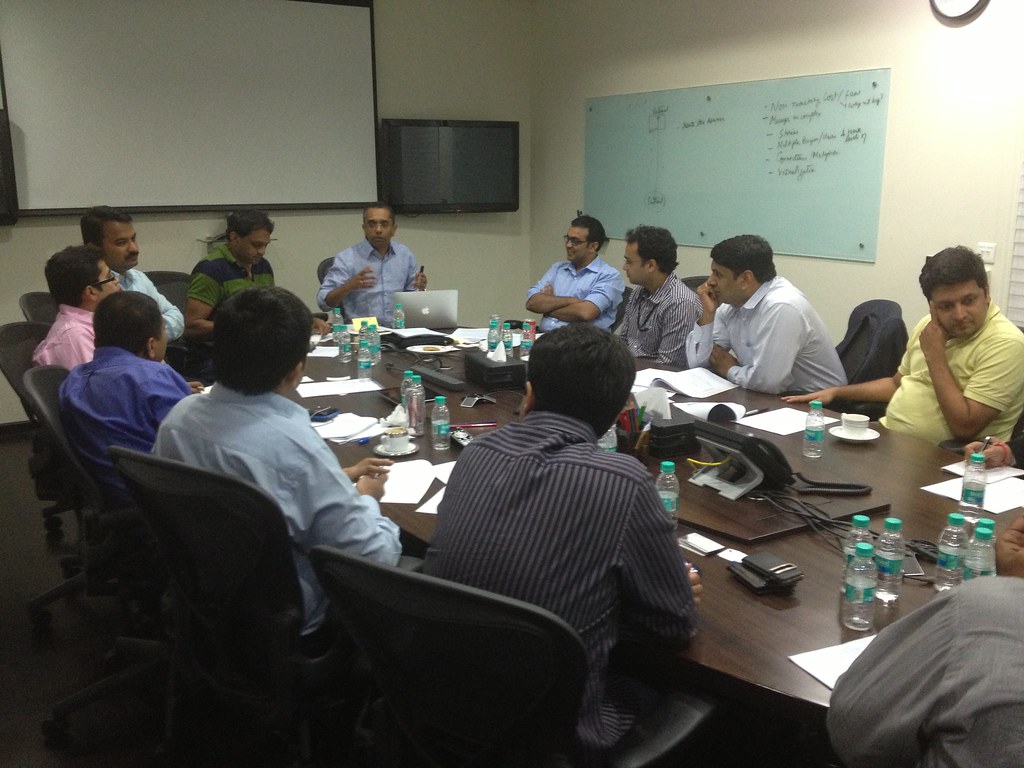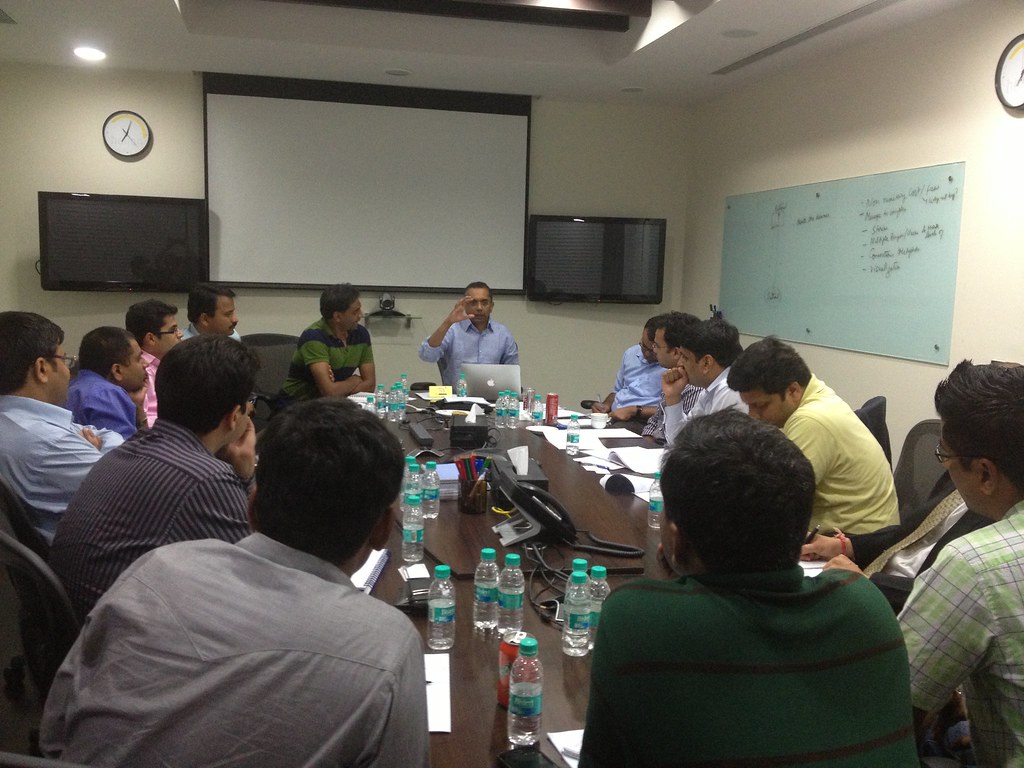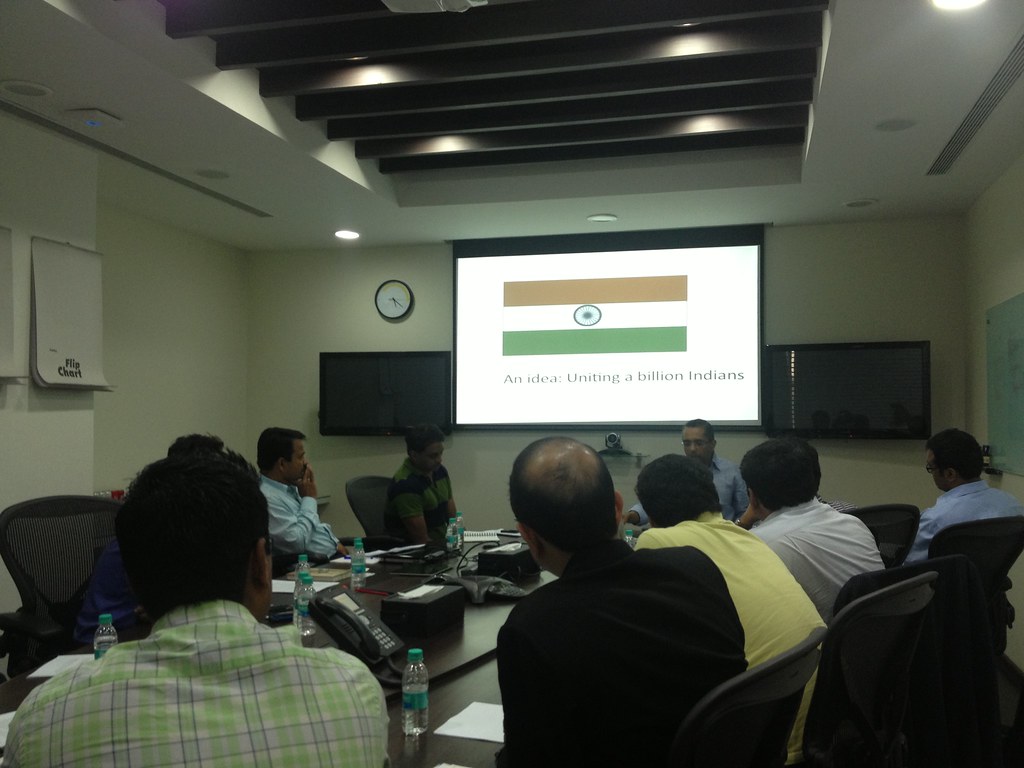“99% Practice, 1% Theory”. This was the ground rule laid down for the session by the workshop facilitator Shankar Maruwada at the beginning. Sounds very much like the tagline of a popular softdrink brand that’s No Bakwaas! No wonder it came from someone who has loads of experience in the FMCG space, built and sold an analytics company and has more recently given life to what is arguably India’s biggest consumer brand, Aadhar.
The theory lasted just a couple of minutes with Shankar telling a simple, yet a compelling story of how the Indian flag evokes a strong feeling even though it is nothing but a geometrical shape consisting of rectangles and a circle! The point that a compelling visual and a strong emotional connect can touch a strong chord was driven home very clearly. Over the course of the next 3 hours, Shankar orchestrated a highly engaging and interactive session with the participating companies, making them think hard and think deeper to help them think in the right direction. What also helped immensely was that Shankar had gone through the profiles of each of the participating companies and knew the challenges each of them were facing.
The participants were involved in exercises that helped them think beyond the regular product features and benefits. Emphasis was placed on understanding and communicating the whys of the product rather than the hows and on ways of building an emotional connect with the customers that will resonate strongly with them.
The participants were made to think through the different stages of the communication to customers. For each step, two companies shared their thought process in detail with other participants sharing their inputs for the two companies. The participants found it very helpful to pick the brain of other entrepreneurs and learn from other entrepreneurs. A couple of participating companies probably found their one-line message or the keyword that signifies their product offering by the end of this workshop!
Here are some of the key takeaways from the workshop, based on the stage and the audience to which one is communicating to:
Idea
- What’s the grand idea that can resonate with everyone? This is beyond the product features, pricing and has a much higher connect. E.g. Education with the reach of television, your own personal secretary..
- If possible, use connections, metaphors and analogies for better impact. E.g. YouTube of…., Google of…..
Setup
- What will make your customers sit up and take notice? This is something related to their business that they wouldn’t have thought of or know about and you instigate that thought through your messaging. This should make them care for your product offerings and be interested in exploring more and have them say, let’s talk! E.g. Did you know that you can now teach a million students right from your classroom? Did you know that 30% of devices in your corporate network go undetected and potential sources of malware that can disrupt your network?
Benefits
- What is it that the customers can actually put to use? What are the tangible benefits that the customers can derive out of your offering? E.g. Deliver courses over low bandwidth and hence reach out to a large number of students even in remote locations, create attractive charts and graphs to derive meaningful and actionable insights out of your data, carry out quick experiments for merchandizing on your e-commerce website with very little involvement from your engineering team
Features
- These are the features and functionalities built into the product. These would explain how the product works. E.g. Various roles built in for access control and permissions, different interfaces and interactions for different user types, alerts, reports and notifications.
As you’d observe, the how part becomes more prominent as you move from the Idea stage to the Features stage and the why part becomes more prominent as you move in the reverse direction. Depending on the whom you’re speaking to in the scheme of things at the customer’s end, you can focus on the appropriate stage and communicate accordingly.
It is said that well begun is half done. Considering that this was the first such roundtable, the response from the product startup community was very encouraging and the participating startups found it to be very relevant and effective. The engagement with the participants will continue even beyond the workshop. The startups will be in regular touch with each other, share their inputs and the learnings derived from the workshop and update on the progress.
Here are some books that Shankar recommended:
- The Art of Explanation by Lee LeFever
- Made to Stick by Chip & Dan Heath
There are more such Playbook Roundtables planned in the coming days across various locations and hope the product startup community will make the best use of those and benefit from them.






